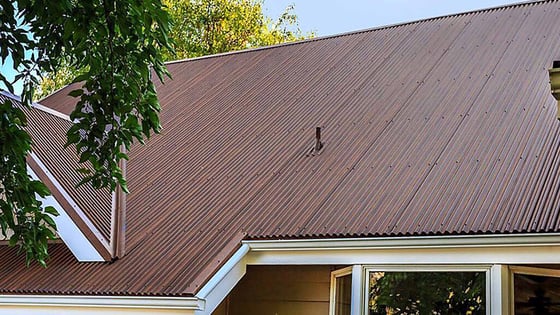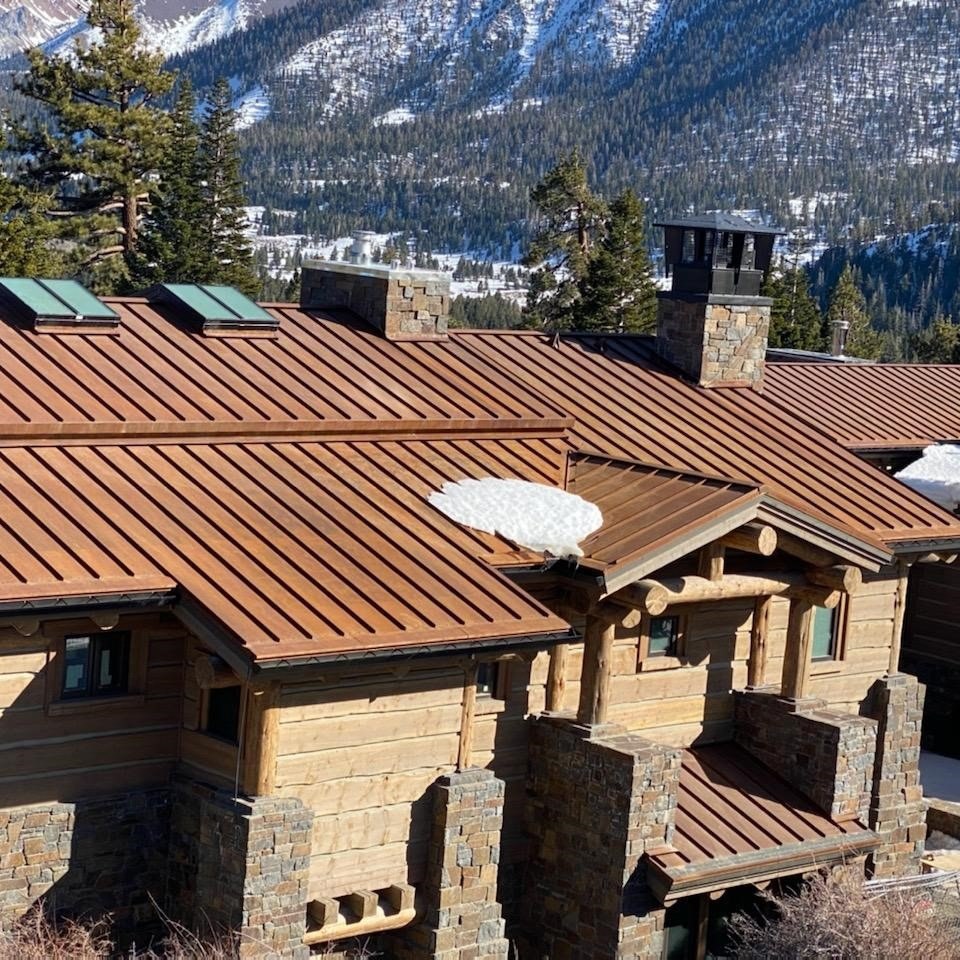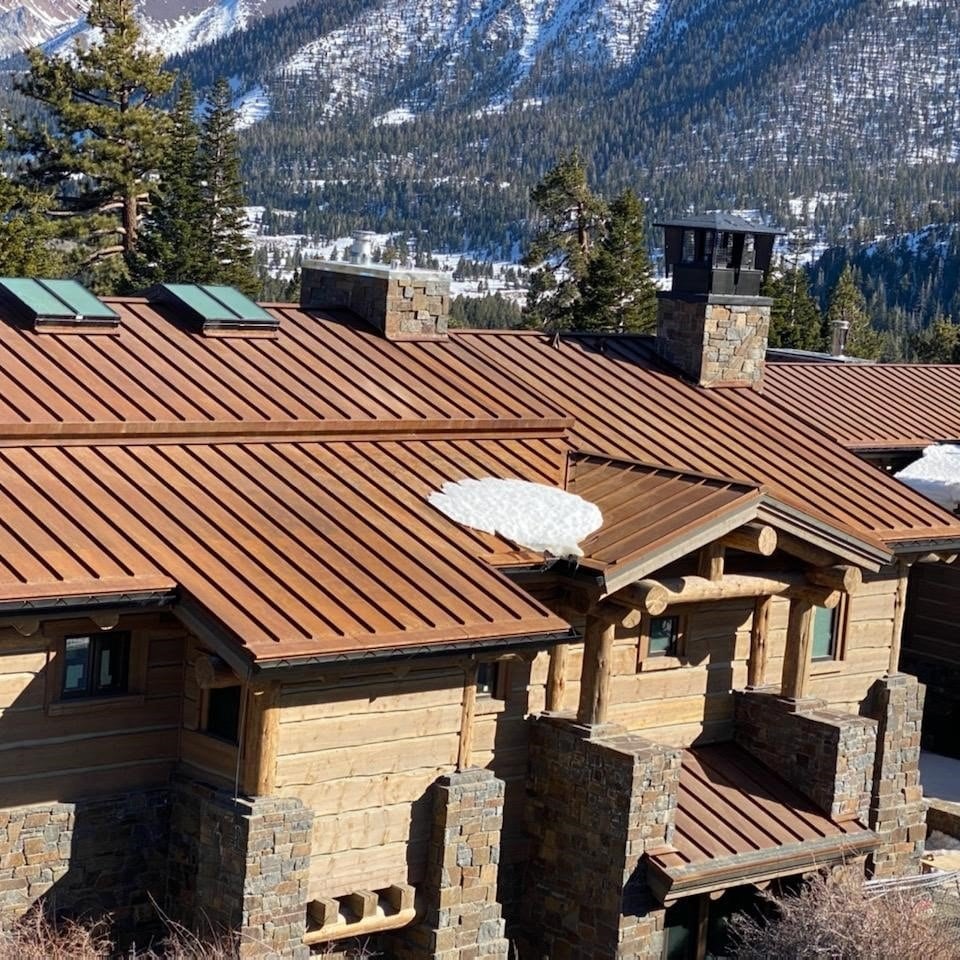Roof Pitch: How To Find Out The Pitch Of A Roof
 7/8” Corrugated Roofing in Streaked Rust®
7/8” Corrugated Roofing in Streaked Rust®
Ready for a new roof? When deciding which type of roofing material to use, some homeowners overlook an important factor: roof pitch. The pitch of your roof will tell you what materials are suitable to use, as not every kind of material can be used on every roof slope.
At Western States Metal Roofing, we want our customers to be informed. If you don't know your roof pitch, or what that even means, we are here to help.
In this article, we will discuss:
- What Is Roof Pitch?
- What Is The Standard Size Pitch?
- How Roof Pitch Affects The Cost Of Installation
- How To Choose The Right Roofing Material Based on Your Roof Pitch
What Is Roof Pitch?
The pitch of a roof refers to the roof's steepness and states how many inches the slope rises for every 12 inches it runs horizontally. The roof pitch angle can be expressed in degrees or as a percentage but is often seen in ratio form, such as 3:12 or 6:12. For example, a 6:12 roof pitch means that the slope of the roof rises 6" for every 12" moving inward.
Roof Pitch Calculator
An easy formula for calculating roof pitch is shown above, rise over run equals pitch. You can also use these values with a roofing calculator. If you don't know the rise and run of your roof, you will have to measure to get these values.
- Rise is the total vertical height of the roof (top of a stud wall to the peak of the roof).
- Run is the horizontal length of one side of the roof (outside edge of a perimeter stud wall to the center of the house).
If you happen to have your home's blueprints readily available, these measurements will be on the plans. Otherwise, you are going to have to measure for them using a level longer than 12", tape measure, and a ladder.
Mark the level at 12" on the bottom side of the level so it can be viewed from the side. On a ladder beside the roof, hold the level horizontal about one foot above the roof. Adjust the level to where it's at a level spot, measure from the 12-inch mark straight down to the roof. That number is the rise. So for example if you measure 6" from bottom of the level to top of roof, You have a 6/12 roof pitch.
If you prefer to measure from the attic, place the end of the level against the bottom of a rafter. Be sure to hold it level and then measure from the 12-inch mark you made on the level straight to the underside of the rafters. The measurement you get is the number of inches the roof rises in 12 inches.

What is The Standard Roof Pitch?
While there is not a standard roof pitch, you can expect to see many roofs fall somewhere between 4:12 and 9:12. As a general rule, roof pitches are categorized in the following way:
- Flat roof: Less than 2:12
- Low pitched roof: 2:12- 4:12
- Conventional roof: 4:12- 9:12
- Steep slope roof/ high pitch roof: Greater than 9:12
How Roof Slope Affects Your Roofing Cost
Slope factor is key when it comes to calculating cost. If your roof falls into the steep-slope category, expect your installation cost to be higher. Once the roof is at a steepness that a contractor or roofer does not consider walkable, extra caution, time, and equipment are all required to ensure safety. This all adds up to being an extra expense.
You also have to factor in that as your roof pitch increases, so does the roof surface area. The larger the surface area and if you factor in a steep roof, the more material would be needed to cover it.
As a general rule, the steeper the pitch, the cost of installation rises. Roof steepness and the surface area of your existing roof, especially one that needs a roof repair, are key factors to consider when it comes to cost.
What Is The Best Roofing Material For Low Pitch Roof?
Torn between two kinds of roofs? Knowing your roof's pitch can help make some tough decisions much easier.
When choosing your roofing material, you need to be careful as not every kind of roofing material can be used on every roof. While a corrugated metal roof is suitable for a low slope, a wood shingle roof is not. A steeper pitch has more flexibility on what you can use than a low-sloped roof.
A lower pitched roof is shallow, or even flat, and therefore water does not run off as easily as a higher pitched roof. Using the wrong type of roofing would result in leaks and severe damage.
Below are the roof pitch ranges that are advised for popular roofing materials:
- Metal Roofing (Excluding standing seam) - 1:12 or greater depending on profile
- Asphalt Shingles - 2:12 or greater
- Slate, Clay, Concrete Tiles - 4:12 steep pitch or greater
- Wood Shingles - 5:12 - 12:12
These values are approximate and can slightly vary depending on your climate and the specific material. Be sure to consult with your designer or a sales representative on which material will be best for your roof slope.
Why Roof Pitch Is Important
While roof pitch is something most homeowners don't think about, it's very important to know when you're considering a roof replacement. Each type of roof has a minimum roof pitch. If you have a roofing system installed that is not compatible with your home's pitched roof, the warranty on the system may become void, and you could also end up with water damage.
Metal roofing systems are a great fit for most roof types. If you are looking into installing a metal roofing system, we are here to help.
We can help you calculate how much material you will need based on the square footage of your project. In order to determine this, we will need the length and width of your wall or roof.
Learn More About The Different Types Of Metal Roofing:
For low slopes: Mechanically Seamed Metal Roof: Cost, Types, And Benefits
For standard slopes: Corrugated Metal Roofing: The Ultimate Homeowners Guide





